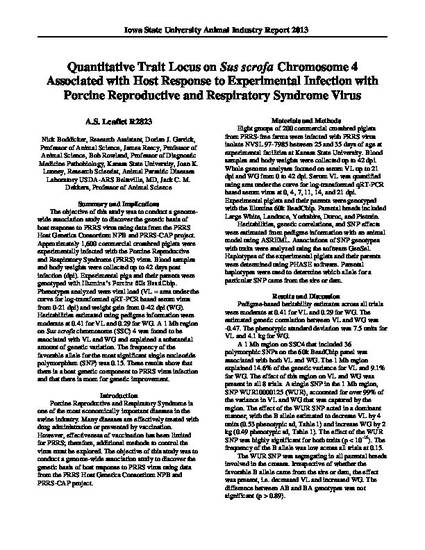
The objective of this study was to conduct a genomewide association study to discover the genetic basis of host response to PRRS virus using data from the PRRS Host Genetics Consortium NPB and PRRS-CAP project. Approximately 1,600 commercial crossbred piglets were experimentally infected with the Porcine Reproductive and Respiratory Syndrome (PRRS) virus. Blood samples and body weights were collected up to 42 days post infection (dpi). Experimental pigs and their parents were genotyped with Illumina’s Porcine 60k BeadChip. Phenotypes analyzed were viral load (VL = area under the curve for log-transformed qRT-PCR based serum virus from 0-21 dpi) and weight gain from 0-42 dpi (WG). Heritabilities estimated using pedigree information were moderate at 0.41 for VL and 0.29 for WG. A 1 Mb region on Sus scrofa chromosome (SSC) 4 was found to be associated with VL and WG and explained a substantial amount of genetic variation. The frequency of the favorable allele for the most significant single nucleotide polymorphism (SNP) was 0.15. These results show that there is a host genetic component to PRRS virus infection and that there is room for genetic improvement.
Available at: http://works.bepress.com/james_reecy/24/
